Abstract
The SP-4 culture medium, developed originally for newly isolated plant and insect mycoplasmas (spiroplasmas), has markedly improved the recovery of Mycoplasma pneumoniae from human clinical materials. This medium, in combination with a direct fluorescent antibody test, can enhance the recovery and identification of the organism by 30-40 percent over conventional culture procedures. Although these modifications are a clear improvement in diagnostic techniques for M. pneumoniae, the time required for growth and identification of the agent is still a major disadvantage for rapid clinical diagnosis. Thus, there remains a critical need for techniques that can specifically identify the major antigens (or other components) of the organism within the first week of the infection.
Full text
PDF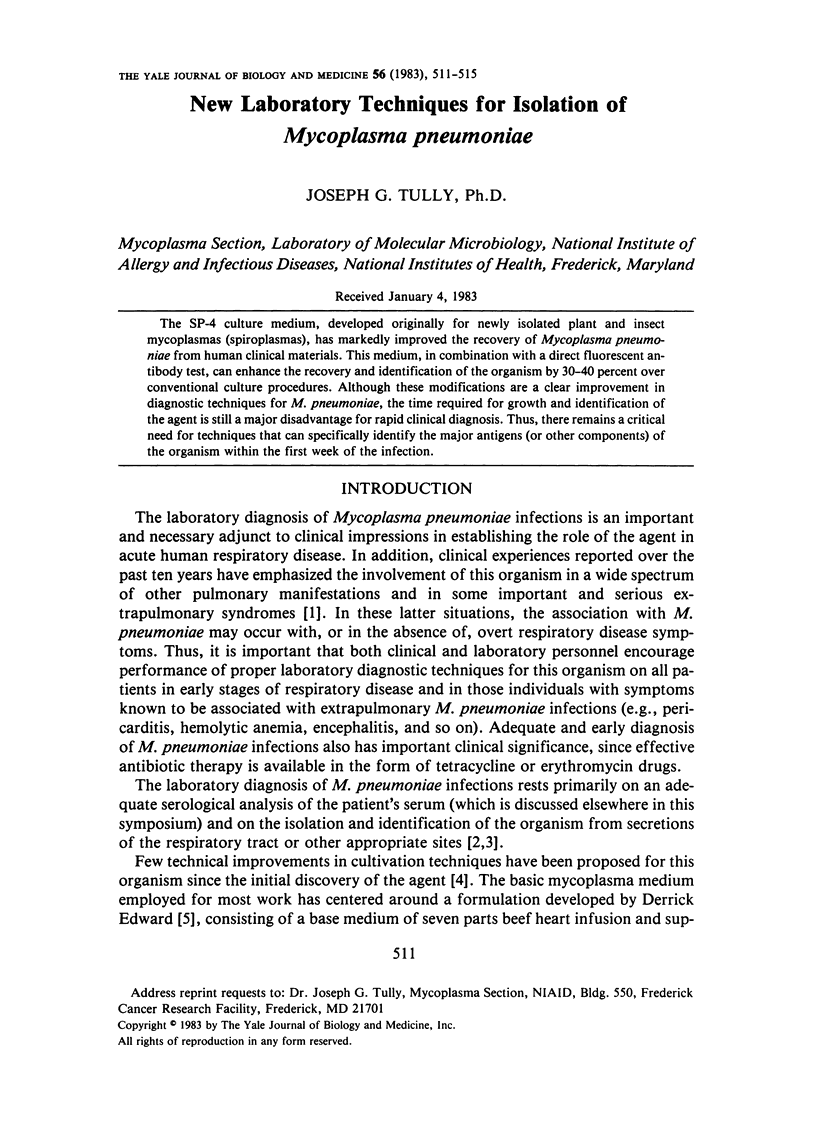
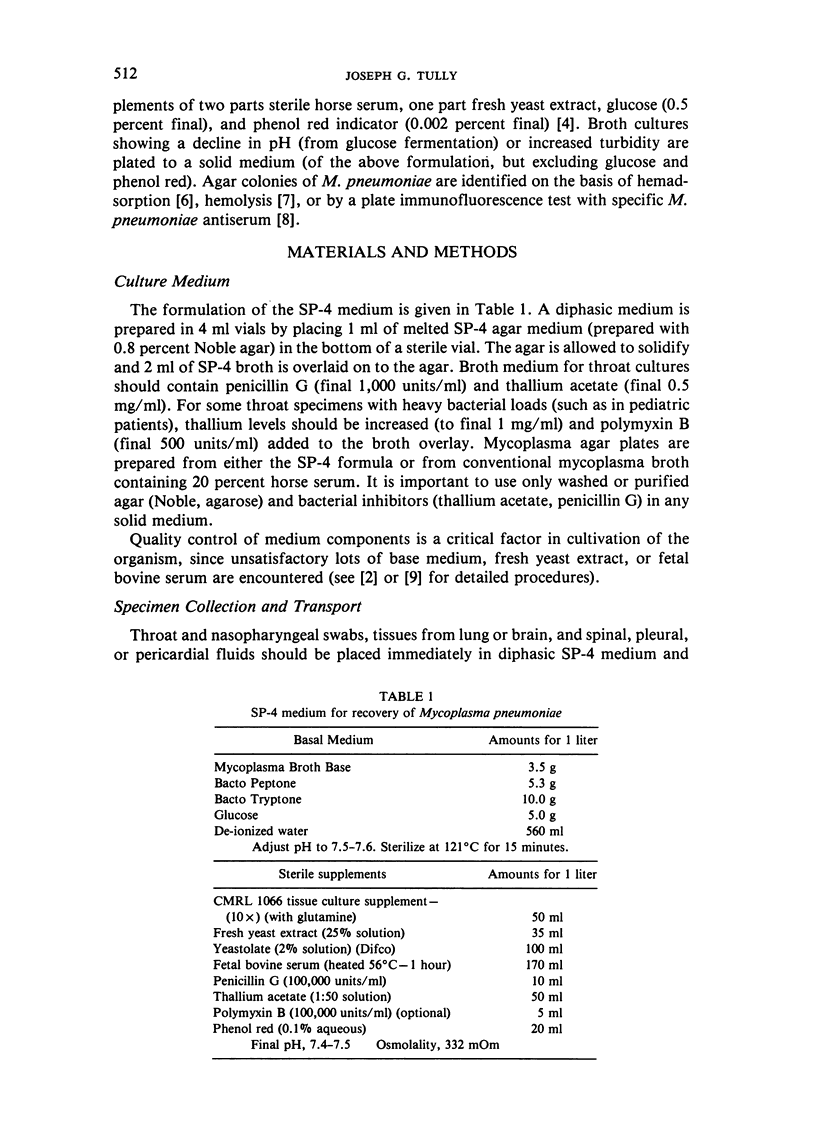
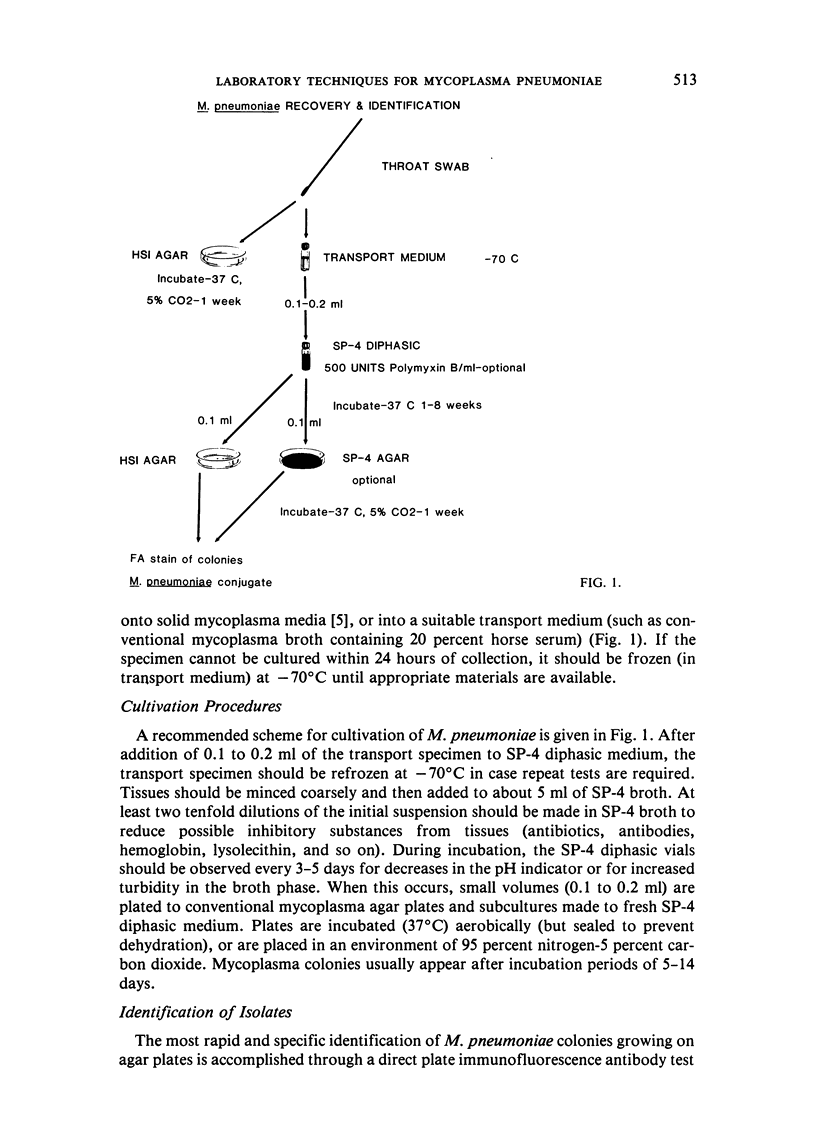
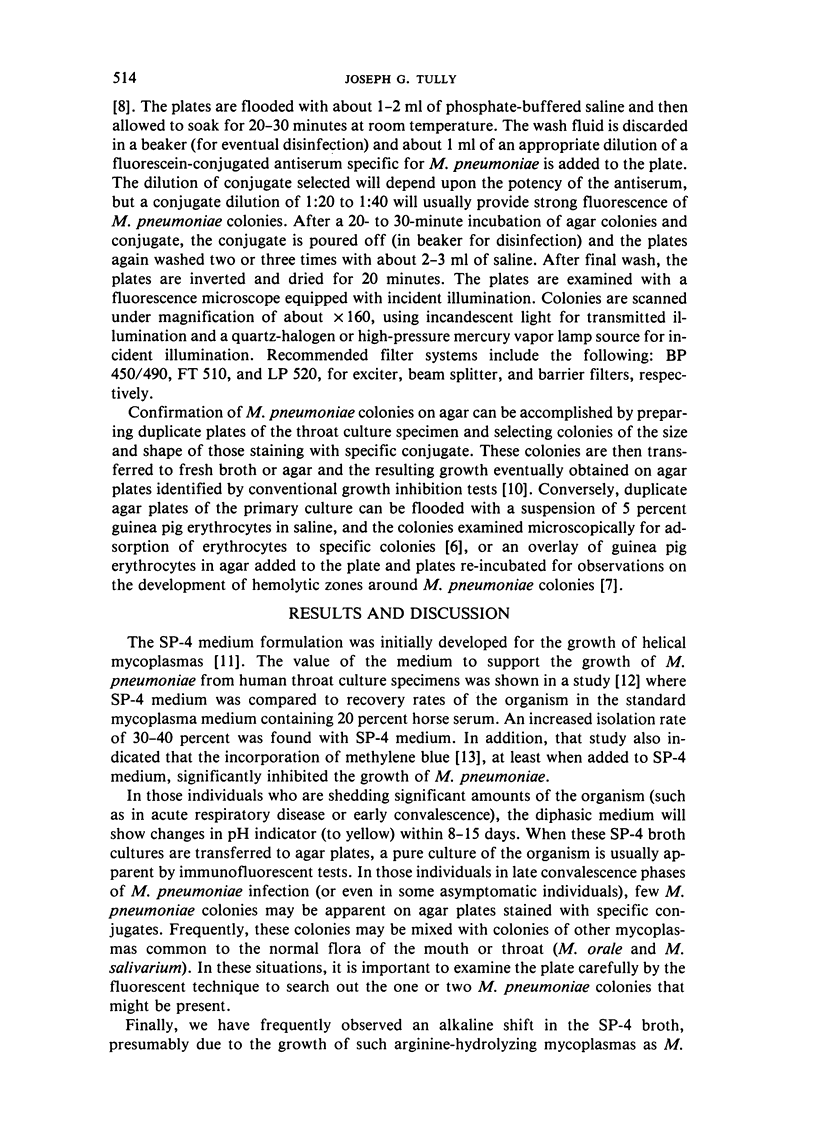
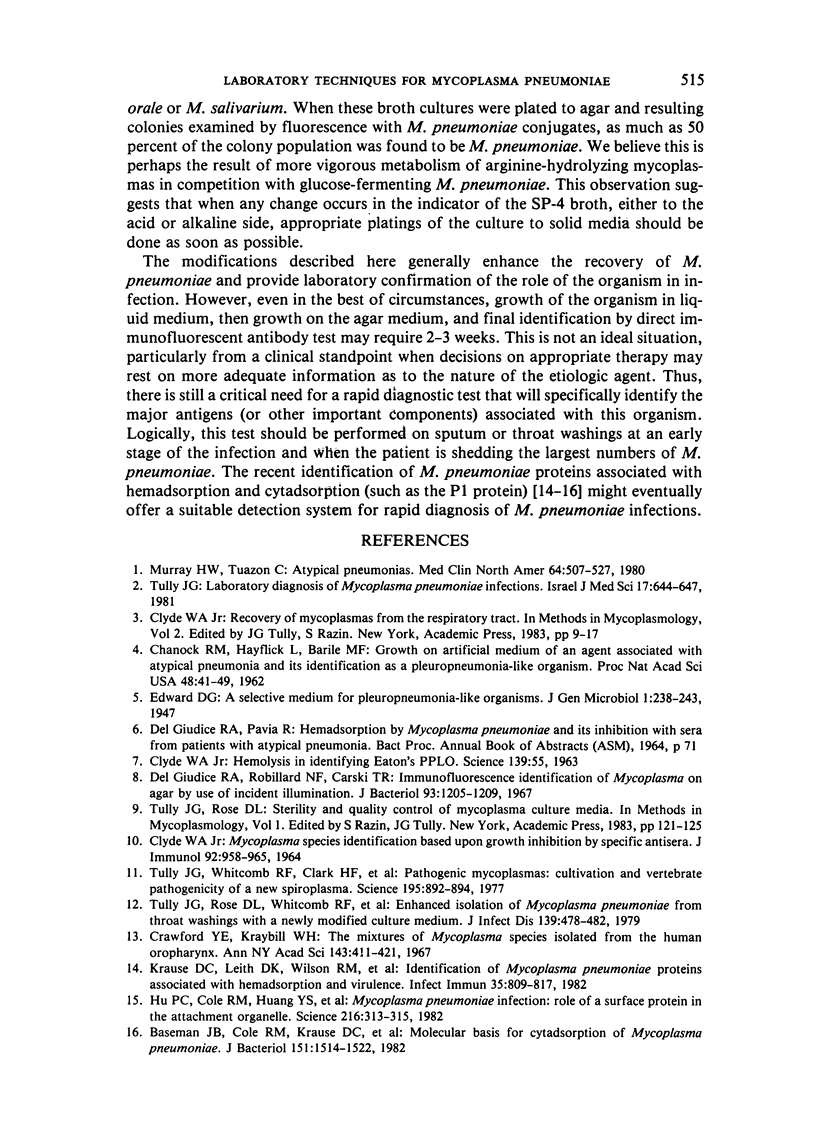
Selected References
These references are in PubMed. This may not be the complete list of references from this article.
- Baseman J. B., Cole R. M., Krause D. C., Leith D. K. Molecular basis for cytadsorption of Mycoplasma pneumoniae. J Bacteriol. 1982 Sep;151(3):1514–1522. doi: 10.1128/jb.151.3.1514-1522.1982. [DOI] [PMC free article] [PubMed] [Google Scholar]
- CHANOCK R. M., HAYFLICK L., BARILE M. F. Growth on artificial medium of an agent associated with atypical pneumonia and its identification as a PPLO. Proc Natl Acad Sci U S A. 1962 Jan 15;48:41–49. doi: 10.1073/pnas.48.1.41. [DOI] [PMC free article] [PubMed] [Google Scholar]
- CLYDE W. A., Jr Hemolysis in identifying Eaton's pleuro-pneumonia-like organism. Science. 1963 Jan 4;139(3549):55–55. doi: 10.1126/science.139.3549.55. [DOI] [PubMed] [Google Scholar]
- CLYDE W. A., Jr MYCOPLASMA SPECIES IDENTIFICATION BASED UPON GROWTH INHIBITION BY SPECIFIC ANTISERA. J Immunol. 1964 Jun;92:958–965. [PubMed] [Google Scholar]
- Crawford Y. E., Kraybill W. H. The mixtures of mycoplasma species isolated from the human oropharynx. Ann N Y Acad Sci. 1967 Jul 28;143(1):411–424. doi: 10.1111/j.1749-6632.1967.tb27685.x. [DOI] [PubMed] [Google Scholar]
- Del Giudice R. A., Robillard N. F., Carski T. R. Immunofluorescence identification of Mycoplasma on agar by use of incident illumination. J Bacteriol. 1967 Apr;93(4):1205–1209. doi: 10.1128/jb.93.4.1205-1209.1967. [DOI] [PMC free article] [PubMed] [Google Scholar]
- Hu P. C., Cole R. M., Huang Y. S., Graham J. A., Gardner D. E., Collier A. M., Clyde W. A., Jr Mycoplasma pneumoniae infection: role of a surface protein in the attachment organelle. Science. 1982 Apr 16;216(4543):313–315. doi: 10.1126/science.6801766. [DOI] [PubMed] [Google Scholar]
- Krause D. C., Leith D. K., Wilson R. M., Baseman J. B. Identification of Mycoplasma pneumoniae proteins associated with hemadsorption and virulence. Infect Immun. 1982 Mar;35(3):809–817. doi: 10.1128/iai.35.3.809-817.1982. [DOI] [PMC free article] [PubMed] [Google Scholar]
- Murray H. W., Tuazon C. Atypical pneumonias. Med Clin North Am. 1980 May;64(3):507–527. doi: 10.1016/s0025-7125(16)31607-8. [DOI] [PubMed] [Google Scholar]
- Tully J. G. Laboratory diagnosis of Mycoplasma pneumoniae infections. Isr J Med Sci. 1981 Jul;17(7):644–647. [PubMed] [Google Scholar]
- Tully J. G., Rose D. L., Whitcomb R. F., Wenzel R. P. Enhanced isolation of Mycoplasma pneumoniae from throat washings with a newly-modified culture medium. J Infect Dis. 1979 Apr;139(4):478–482. doi: 10.1093/infdis/139.4.478. [DOI] [PubMed] [Google Scholar]
- Tully J. G., Whitcomb R. F., Clark H. F., Williamson D. L. Pathogenic mycoplasmas: cultivation and vertebrate pathogenicity of a new spiroplasma. Science. 1977 Mar 4;195(4281):892–894. doi: 10.1126/science.841314. [DOI] [PubMed] [Google Scholar]


